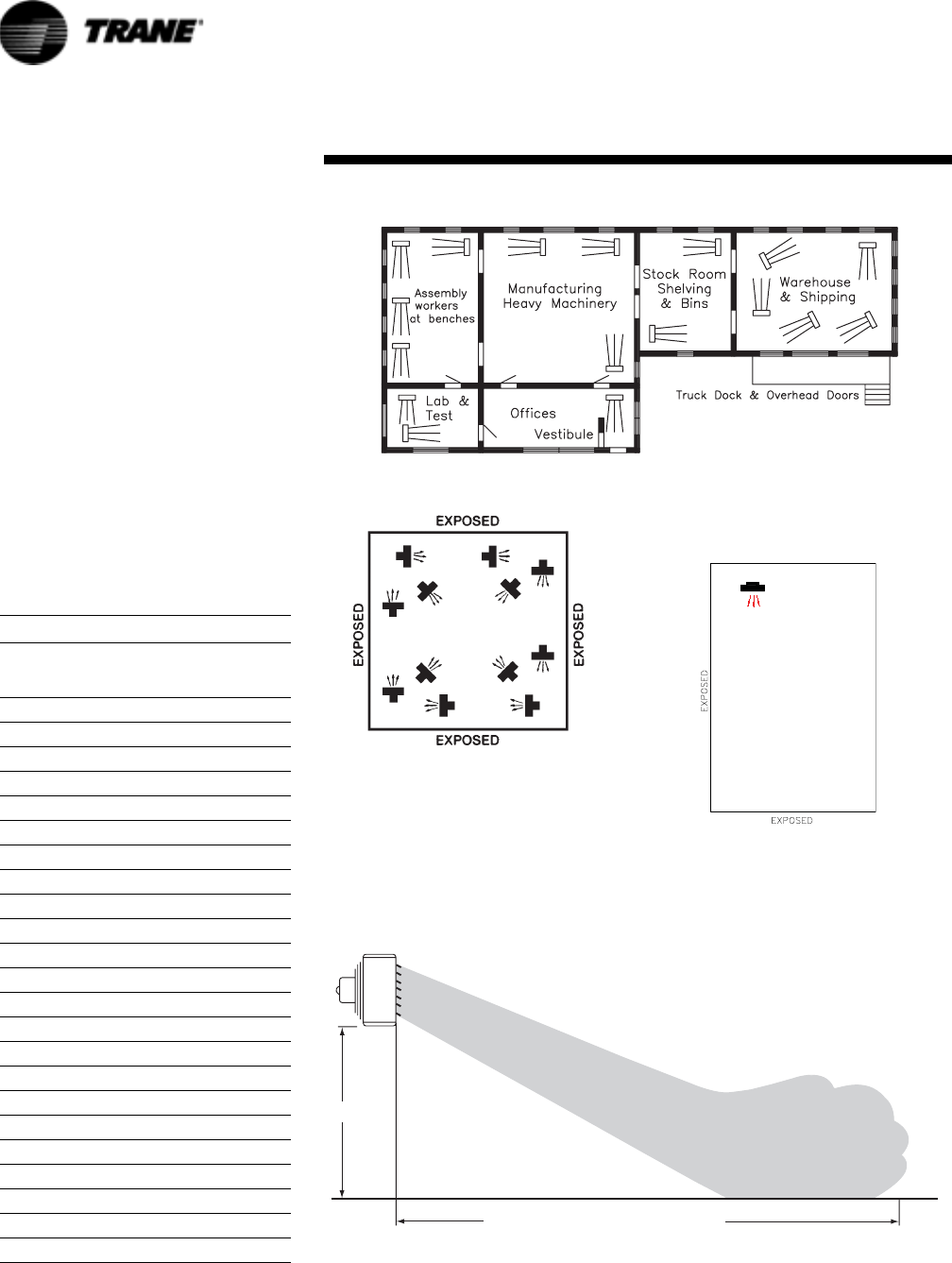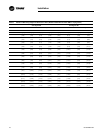
6 UH-SVX01A-EN
It is assumed that the design
engineer has selected, sized, and
located in the area to be heated.
However, the information given here
may be of additional help to the
installer. These sketches indicate
suggested basic locations for
different types of unit heaters.
Horizontal unit heaters should be
located to give a circulatory motion,
preferably in the outer perimeter of
the building. The units should be
spaced to properly blanket the areas
with warm air.
The unit should be suspended from
connections provided in the unit by
means of rods. The rods should then
be attached to solid supports of the
building.
Ta ble 1.
Model
No
Maximum
Mounting HT.
ft (m)
Approx. Max.
Throw ft (m)
A08 8 (2.4) 20 (6.1)
A18 8 (2.4) 25 (7.6)
A25 9 (2.7) 29 (8.8)
A36 9 (2.7) 29 (8.8)
18 8 (2.4) 20 (6.1)
24 8 (2.4) 24 (7.3)
36 9 (2.7) 28 (8.5)
48 9 (2.7) 30 (9.1)
60 10 (3.0) 30 (9.1)
72 10 (3.0) 29 (8.8)
84 10 (3.0) 30 (9.1)
96 11 (3.4) 38 (11.6)
108 11 (3.4) 40 (12.2)
120 12 (3.7) 40 (12.2)
132 13 (4.0) 54 (16.5)
144 13 (4.0) 55 (16.8)
156 13 (4.0) 55 (16.8)
180 13 (4.0) 53 (16.2)
204 13 (4.0) 55 (16.8)
240 14 (4.3) 57 (17.4)
280 14 (4.3) 57 (17.4)
300 15 (4.6) 58 (17.7)
360 15 (4.6) 60 (18.3)
Figure 6 represents a large square
area with exposed walls and roof;
units are blanketing all exposed
surfaces.
Figure 7 is based on 2 PSI (13.8 kPa)
steam pressure and 60 °F (16 °C)
entering air temperature.
Figure 5.
Figure 6.
Figure 7. Mounting Height and Approx. Heat Throw
H
MAXIMUM DISTANCE OF THROW = T
A narrow area with four exposed
walls either with or without roof
exposure.
A small area with exposed walls
requiring one unit.
Figure 8.
Location


















